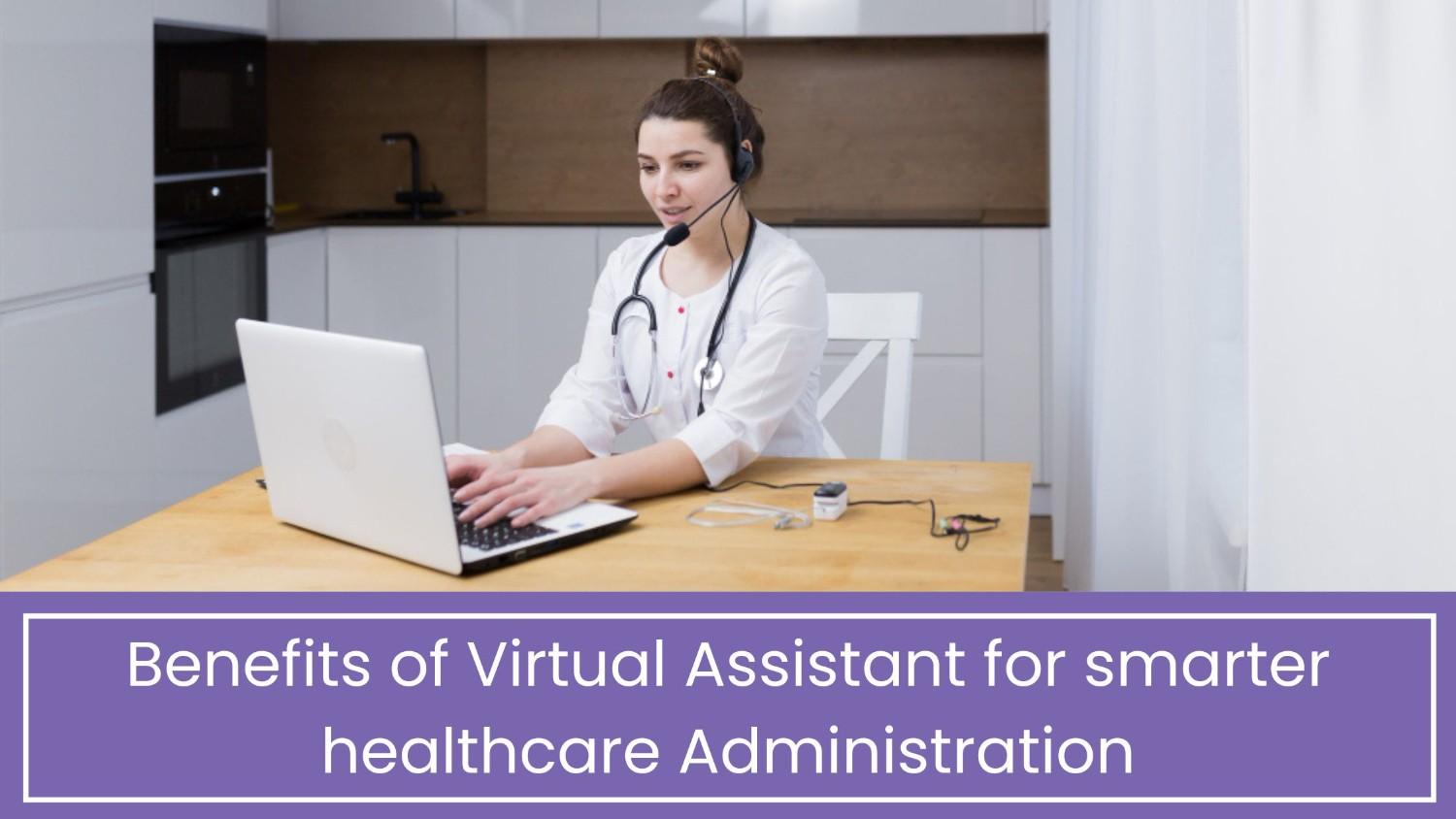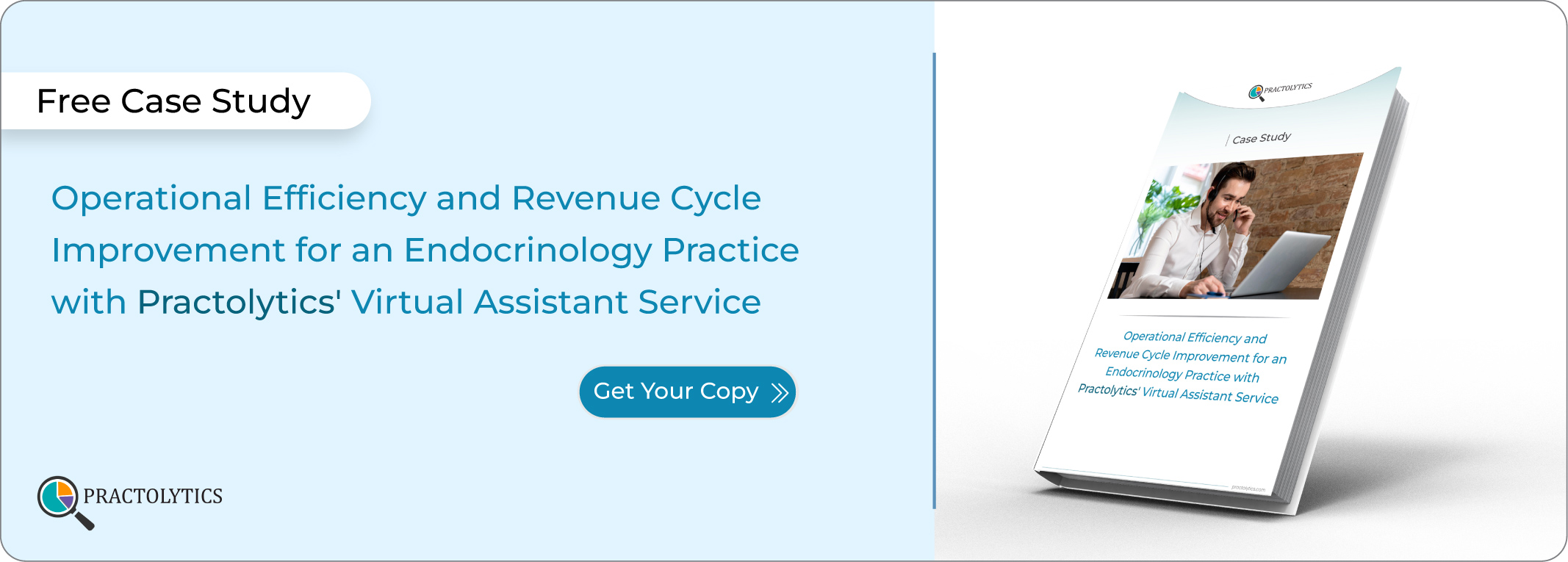Benefits of Virtual Assistant for smarter healthcare Administration
Discover the benefits of virtual assistant for smarter healthcare administration—from streamlining appointment scheduling and enhancing patient communication to minimizing billing errors and reducing administrative workload. This blog explores how medical practices can leverage intelligent support tools to free up staff time, lower no-show rates, and improve the overall patient experience. Whether you’re managing a clinic or overseeing a hospital department, virtual assistants provide reliable, cost-effective support around the clock. Learn how healthcare professionals are using these solutions to stay organized, optimize workflows, and elevate care delivery. Powered by Practolytics—your trusted partner in healthcare innovation.
Table of Contents
Benefits of Virtual Assistants for Smarter Healthcare Administration
For busy clinics, an on-demand virtual assistant can lighten workloads and improve patient experience. Doctors and administrators juggle appointments, calls, and paperwork daily. Virtual assistants help shoulder these tasks — booking appointments, sending reminders, answering routine questions, and even managing insurance checks and medical billing. This smarter admin support frees staff to focus on patient care. For example, automated scheduling bots cut no-shows by sending SMS and email reminders , while virtual assistants handling billing reduce errors and speed up reimbursements. As Practolytics experts note, many clinic managers say these solutions streamline workflows and improve patient satisfaction.
Healthcare providers today are juggling patient care with mountains of admin work — scheduling appointments, answering patient questions, verifying insurance and processing billing, just to name a few. Virtual assistants help by taking on these routine tasks so staff can focus on patients. (In practice, a virtual assistant might be a remote trained staff member or an automated tool — either way, chores get done without tying up your on-site team.) They can book and confirm appointments, send reminders, triage common patient inquiries, and even handle billing follow-ups . Overall, adding a virtual assistant lightens the administrative load and helps clinics run more smoothly.
Better Scheduling and Fewer No-Shows
A virtual assistant can take over appointment scheduling around the clock. It acts like a 24/7 receptionist by syncing with your clinic’s calendar and filling open slots without double-booking . The assistant sends automated reminders (text, email or phone) to patients ahead of their visit, significantly cutting no-shows . Some systems also verify insurance coverage when patients book, preventing unexpected delays later . Intelligent scheduling tools can even use patient preferences and provider availability to optimize the clinic calendar . The result? A more predictable schedule and fewer idle gaps. Clinics using this approach often find their schedule stays full and staff spend less time scrambling on the phone.
- 24/7 Appointment Booking: Handle patient bookings and rescheduling around the clock, with the assistant syncing directly to your EHR or calendar .
- Automated Reminders: Send tailored SMS, email or phone reminders before appointments, which studies show can cut no-shows significantly .
- Dynamic Scheduling: Use smart rules to fill cancellations and open slots based on patient priorities and provider availability .
- Patient Self-Service: Offer an online portal for patients to book or change appointments themselves, reducing front-desk calls.
Improved Patient Communication and Engagement
Virtual assistants also help patients stay informed and engaged. Clinics often use chatbots or automated call systems to answer common questions (clinic hours, test results, prep instructions) at any hour . After a visit, the assistant can send a check-in message or follow-up reminders for medications and next steps. In fact, one clinic using a VA for follow-ups saw adherence to care plans jump by 25% , and a rural center boosted telehealth visits by 30% by having a VA handle virtual care scheduling and support . Studies show that 24/7 patient support and timely reminders build trust and satisfaction . Overall, these tools keep patients connected to their care without extra work for your staff.
- 24/7 Patient Support: Offer round-the-clock chat or phone help to answer common questions and triage simple issues .
- Personalized Reminders: Send timely SMS or email reminders for appointments, medications and care plans .
- Follow-Up Coordination: Check in after treatments, schedule follow-up appointments, and keep patients informed about next steps .
- Telehealth Assistance: Help patients connect to virtual visits by handling scheduling and sending link/instruction reminders .
- Real-World Impact: Studies and case reports show improved patient outcomes – for example, better treatment adherence and more efficient telehealth care .
Reduced Administrative Burden
Behind the scenes, a virtual assistant can chip away at daily paperwork. They can update EHR records, manage referrals and lab orders, or draft routine documents. The VA can also handle patient and vendor calls or emails — returning pharmacy requests, answering billing questions, and scheduling callbacks. Tasks like drafting referral letters or intake forms can also be handled by a VA, saving additional staff time. Taking these chores off your team’s plate means fewer missed details and less burnout. In fact, studies note that outsourcing routine admin lets your staff focus on patient care .
- EHR Data Management: Update patient records, enter visit notes and lab results into the system .
- Insurance Coordination: Verify patient insurance and handle pre-authorization paperwork before visits .
- Billing Assistance: Prepare billing codes, submit claims and follow up on payments or denials .
- Correspondence Handling: Return routine patient and vendor calls/emails (scheduling callbacks, answering FAQs) .
Smoother Billing and Revenue Cycle
Handling billing and insurance claims is another area where virtual assistants shine. They can code charges, submit claims and even post insurance payments under staff supervision. By catching medical coding errors up front, a VA helps avoid rejected claims and speeds up reimbursements . It’s like having an extra billing clerk: delayed claims are flagged immediately and follow-up bills or appeals can be sent without waiting. This streamlined claims process means your practice gets paid faster and spends less time on paperwork. In practice, offices using VAs for billing see fewer denials and steadier revenue flow.
- Claims and Coding: Enter medical codes and submit insurance claims (ahead-of-appointment checks help avoid denials) .
- Denial Follow-up: Track denied or unpaid claims and re-submit corrections to get faster reimbursements.
- Payment Processing: Post insurance and patient payments, send out billing statements to reduce outstanding balances.
- Insurance Checks: Verify coverage details in advance to prevent billing issues .
Cost Savings and 24/7 Support
Virtual assistants often save money too. Analysts estimate chatbots and virtual assistants could save the healthcare industry around $3.6 billion by 2025 . Instead of hiring a full-time staff member, clinics can contract a VA and pay only for the support they use . This cuts expenses on salaries, benefits and office space. Many VA services also operate 24/7, so patient questions or scheduling requests can be handled after hours or on weekends . Around-the-clock coverage reduces patient waiting times and avoids bottlenecks, which leads to better satisfaction and efficiency.
- Lower Labor Costs: Pay only for the hours of support you need, saving on salaries and benefits .
- Flexible Staffing: Scale up VA support during busy periods without hiring more in-house staff.
- 24/7 Coverage: Evening and weekend availability means patient questions get answered around the clock .
- Reduced Overtime: With VAs available after hours, your team can avoid costly overtime pay or burnout.
Key Takeaways
- Target Key Tasks: Start by listing routine chores (e.g. appointment scheduling, reminders, data entry) to delegate to a VA.
- Choose Compliant, Experienced VA: Select a service trained in medical workflows, terminology and HIPAA guidelines .
- Ensure Tech Compatibility: Pick a VA solution that integrates with your EHR and practice management software .
- Maintain Data Security: Make sure the VA uses encrypted communication and follows privacy rules to keep patient information safe .
- Train Staff and Measure: Explain the new workflows to your team and monitor results (no-show rates, time saved, patient feedback) to confirm success.
- Iterate and Improve: Seek feedback from staff and patients to fine-tune the VA’s role and processes over time.
In the end, using a virtual assistant isn’t about replacing staff — it’s about empowering them to do what they do best. By offloading routine admin to a VA, your clinic runs more efficiently, and patients receive better, more focused care. Practices that adopt these tools often find their day-to-day workflows become smoother, staff stress goes down, and patient satisfaction goes up. Embracing these tools doesn’t replace your team — it makes everyone’s job easier and your clinic more patient-friendly. In short, for busy healthcare teams a small change like adopting virtual medical assistant services can make a big difference in efficiency and patient care. The right virtual assistant can become an indispensable member of your admin team.
Read More – From Chaos to Efficiency: A Small Practice’s Journey with a Virtual Assistant
Talk to Medical Billing Expert Today — Get a Free Demo Now!






